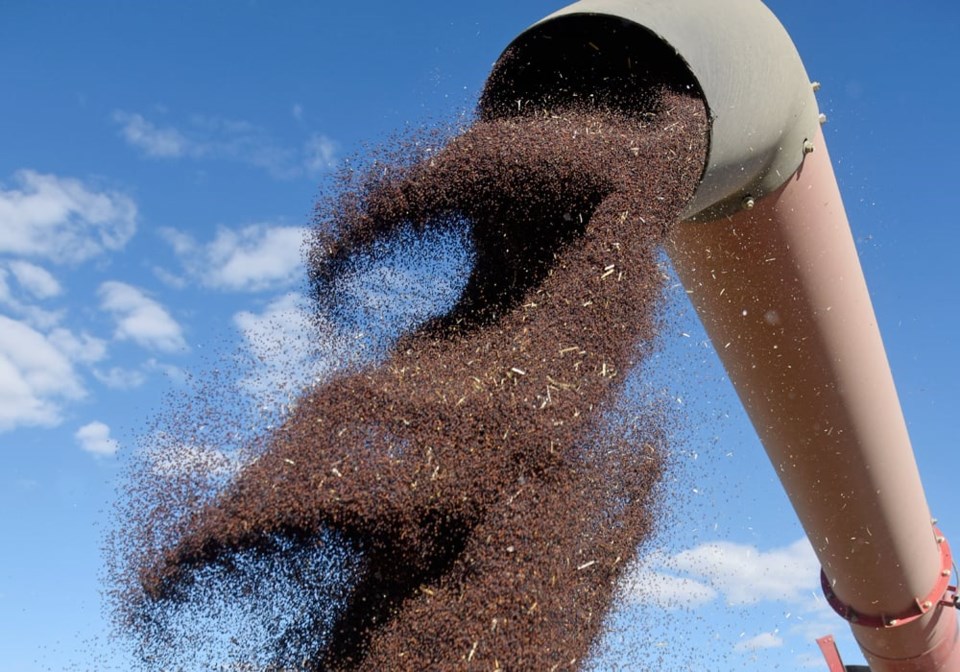WESTERN PRODUCER — Canadian canola growers could soon have a big new competitor close to home.
Corteva Agriscience, Bunge and Chevron U.S.A. Inc. have announced a collaboration to produce winter canola in the southern United States.
Corteva believes there is potential to grow up to 10 million acres in that region within seven to nine years.
To put that in perspective, Canadian growers seeded 21 million acres of the oilseed in 2022, while Australian farmers planted about nine million acres.
Growers in the U.S. harvested 2.2 million acres of canola last year.
A tiny fraction of that was grown in the south. There were 9,000 acres seeded in Kansas and 7,000 in Oklahoma.
Tom Greene, leader of external innovation with Corteva, said the company is starting slow, targeting 10,000 acres of production in Tennessee and Mississippi for its 2023 pilot program.
Those acres will increase each year as the company “unleashes” its breeding and agronomic capabilities.
“The final footprint will really depend on how well those ramp-ups go,” he said.
Keith Fournier, a canola grower from Lone Rock, Sask., isn’t overly concerned about the potential competitive threat looming south of the border.
“It would really surprise me if they could hit 10 million acres because they are going to have to take something else out of the rotation that is probably making them money,” he said.
Even if farmers in the southern U.S. could eventually grow 10 million acres of the crop, he doesn’t believe it would be a competitive threat, at least on the oil side.
“I think the market would be able to absorb that,” said Fournier.
The U.S. Energy Information Administration is forecasting 5.9 billion gallons per year of renewable diesel production capacity by the end of 2025, up from 2.6 billion gallons today.
That means there will be plenty of demand for soybean and canola oil.
What concerns him more is what will happen to the meal produced in the southern U.S.
Most of Western Canada’s canola meal is consumed by California’s dairy sector. That market would likely be safe because it is just as far or further to ship the meal from the southern U.S.
However, markets like Wisconsin could be in jeopardy if Corteva’s vision is realized.
“It would be interesting to see what they find for a market for meal,” said Fournier.
Greene said the winter canola will be used as a cover crop in a double crop system following soybeans or cotton.
“It’s a really nice option for growers to be able to create some additional revenue and do it in a sustainable way,” he said.
“The option of having a canola-soybean rotation really maximizes the output of oil per acre on an annual basis.”
Greene acknowledged that the initial hybrids hitting the market are not “super adapted” for the region yet.
“To be fair, we haven’t really started breeding for this geography,” he said. “We will continue to get better at this going forward as we start leveraging our breeding assets to start driving agronomic and genetic gain and overall production for the southern part of the U.S.”
Bunge Chevron Ag Renewables, the joint venture between Bunge and Chevron, will contract with growers to purchase the harvested winter canola and crush it for use in the biofuel sector.
The two companies signed a 50-50 joint venture in 2021 with Bunge contributing its soybean processing facilities in Destrehan, Louisiana, and Cairo, Illinois, plus US$600 million cash to the partnership.
Chevron gets the offtake rights to the oil produced at those two facilities to manufacture and market renewable diesel and jet fuel.
“The collaboration across the different organizations is really what I think is going to make this a successful outcome,” said Greene.
The reason the winter hybrids are initially being introduced in Tennessee and Mississippi instead of closer to the Bunge plants is that Corteva believes the crops will have a better chance of surviving in more southern states with milder winters.
Greene said the hope is that over time the company will develop winter hybrids that are better adapted to more northern winters.



